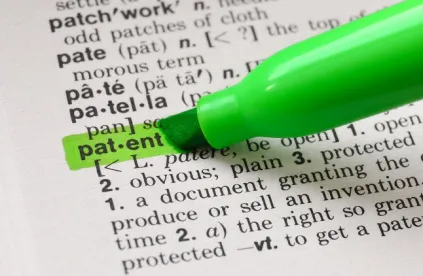The US Court of Appeals for the Federal Circuit held that a decision by the Patent Trial and Appeal Board (PTAB) as to whether a post grant review petitioner properly disclosed all parties in interest is non-appealable. ESIP Series 2, LLC v. Puzhen Life USA, LLC, Case No. 19-1659 (Fed. Cir. May 19, 2020) (Reyna, J.).
This dispute began when Puzhen filed a petition for inter partes review for one of ESIP’s patents. Puzhen asserted that three independent claims were obvious on two grounds. In granting the petition, the PTAB found that each of the asserted grounds for invalidity rendered the claims obvious. More specifically, the PTAB found that the primary reference in each ground contained all but one claim limitation, that the two secondary references each disclosed an aspect of the remaining limitation, and that a person of ordinary skill in the art would have been motivated to combine either secondary reference with the primary reference to arrive at the claimed invention.
In addition to opposing the merits of the petition, ESIP argued that Puzhen’s petition was barred from institution because it “failed to identify ‘all real parties in interest’ [RPIs] as required by 35 U.S.C. § 312(a)(2).” ESIP specifically argued that Puzhen failed to disclose two RPIs. The PTAB disagreed, finding that the two parties did not qualify as RPIs within the meaning of § 312(a)(2). ESIP appealed.
In terms of merits, ESIP argued the PTAB made factual and legal errors in its obviousness analysis. .Starting with the obviousness analysis, the Federal Circuit first considered the four factual errors asserted by ESIP – but found the PTAB’s findings were supported by substantial evidence. In each instance, the Court found that the PTAB did not err by crediting the opinion of one expert over the opinion of a competing expert.
Turning to the legal challenges on obviousness, the Federal Circuit declined to address ESIP’s arguments on the merits, explaining that they were improperly presented and argued. ESIP argued that the PTAB committed legal error by failing to define the level of ordinary skill in the art and improperly construing the claim term “wall.” However, the Court found that ESIP failed to clearly explain why the PTAB’s decision would be different if the PTAB defined the level of ordinary skill in the art or adopted ESIP’s claim construction. For these reasons alone, the Court declined to address the merits of ESIP’s arguments.
Finally, the Federal Circuit held that the PTAB’s decision as to whether a petition identifies all RPIs is non-appealable. A petition may be considered by the PTAB only if it includes, among other things, an “identification of all real parties in interest” and an “identification ‘with particularity’ of each claim challenged, the grounds of each challenge, and the supporting evidence.” Reviewing Supreme Court precedent, the Federal Circuit noted that under Cuozzo Speed Techs. v. Lee (IP Update, Vol. 19, No. 7), PTAB “decisions concerning the ‘particularity’ requirement under § 312(a)(3)” are non-appealable. Further, under Thryv v. Click-to-Call, PTAB decisions regarding whether the one-year institution time bar precludes institution are non-appealable because the time-bar limitation is a condition of institution. In Click-to-Call, the Supreme Court explained that the PTAB’s application of the time bar is precluded from judicial review because it is a statutory condition of institution.
Expanding on this precedent, the Federal Circuit held that judicial review of a PTAB decision concerning whether, under § 312(a)(2), a petition identifies all RPIs “raises ‘an ordinary dispute about the application of an institution related statute’” and is similarly precluded. Accordingly, the Court did not address the merits of ESIP’s arguments regarding institution.
Practice Note: In view of Cuozzo and Click-to-Call, patent owners are likely unable to challenge any PTAB decisions relating to the application of an institution-related statute.
This article was authored by law clerk Gilbert Smolenski.



 />i
/>i

